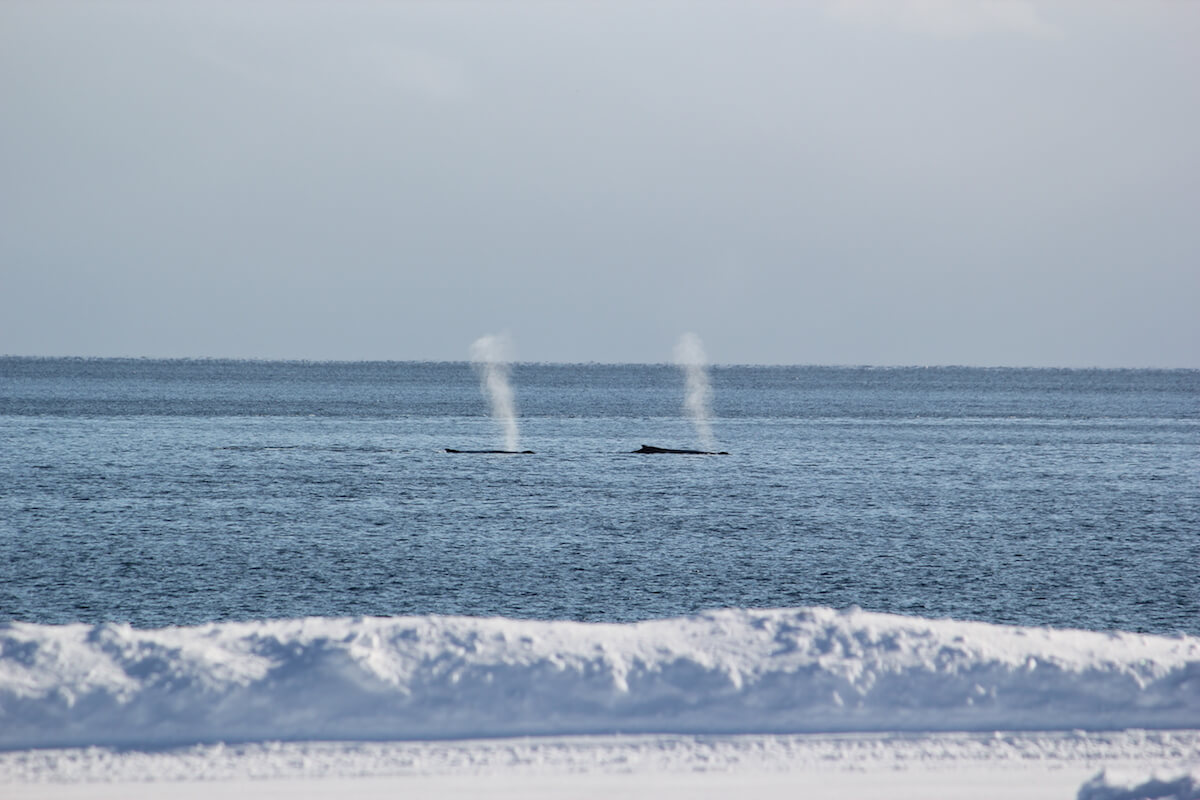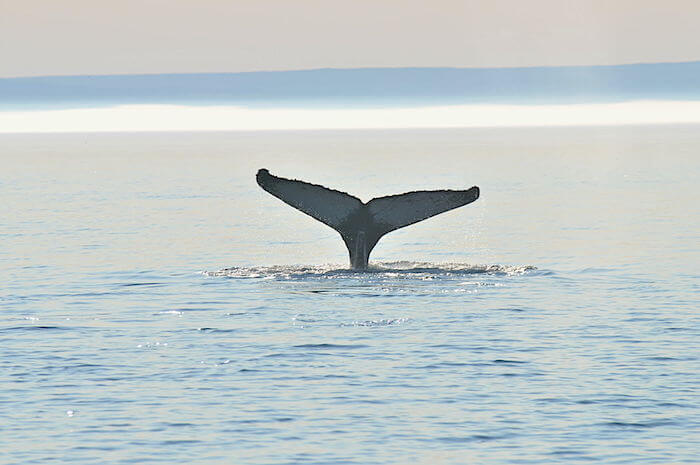On the St. Lawrence, it’s ice and more ice as far as the eye can see! In the Gaspé, where this pack ice stretches over a kilometre, seals bask in the sun. On January 20, in Gaspé Bay, nearly 150 harbour seals and about 15 harp seals were resting on the ice. Other harbour seals were also seen swimming off Penouille.
Remember that the pupping season for harp seals is right around the corner! It starts in early February and lasts through mid-March, so there’s a good chance we will be seeing seal pups soon! Harbour seals, on the other hand, tend to give birth in May.
But the highlight of the week was the unexpected blasts off Franquelin on Monday. Indeed, we’ve received a report of a few humpback whales in these harsh late January weather conditions: amateur cetologist Jacques Gélineau confirms the presence of a small group of four humpbacks, while another resident spotted a solitary individual offshore near Franquelin. “I was really surprised, with all that ice,” remarks the latter.
Still here?
How is it that we are still observing humpbacks in the St. Lawrence this time of the year? If we go by their usual migratory patterns as well as Whale Map, shouldn’t they be in the southern United States and the Caribbean, busy soaking up the sun and breeding? Although this is the average trend, there are a few exceptions to the rule.
It is possible that some humpback whales remain all winter long in their summer feeding grounds, thus “skipping” a migration. These are believed to be mostly juveniles that have not quite reached sexual maturity or, more often, young and small males that would likely struggle to compete for a mate against older, stronger individuals. Instead of mingling with females in the South, they remain in the frigid waters of Quebec, saving their energy to join them in the years to come and better compete against their elders!
It should also be noted that the whale-watching season has officially begun in the Caribbean! Will we observe any well-known individuals from the St. Lawrence? It is hoped that individuals known from our region might be identified, as was the case with Le Souffleur (H531) or H930.
Share your observations!
Have you seen any marine mammals in the St. Lawrence? A spout, a back, a seal in the middle of a nap? Write to us and send your photos to [email protected]!






